New coaching staff aims to prove Oregon State can compete with best
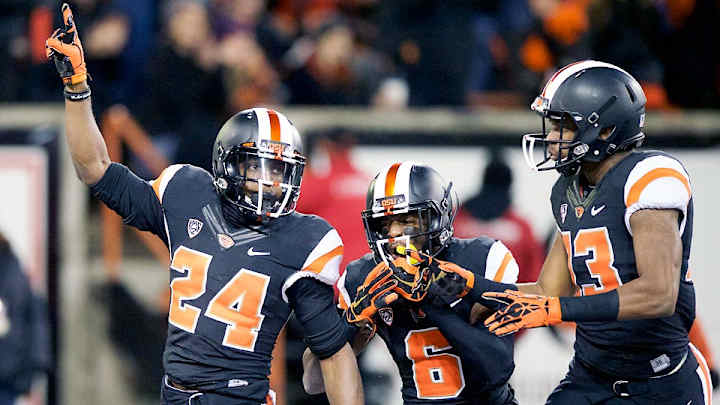
CORVALLIS, Ore.—Kalani Sitake was with Dennis Erickson on a recruiting trip to Florida when Sitake, then the defensive coordinator at Utah, asked then-Utes offensive coordinator Erickson the best place he had ever coached.
Erickson, who won national championships with Miami in 1989 and ‘91 and has made stops all over college and professional football, didn’t hesitate in answering.
“Oregon State in Corvallis,” he told Sitake. “Best place for me, best place for my family. If I had to do it over again, I would never have left.”
Of course, if Erickson hadn’t left (in 2003, to coach the San Francisco 49ers), Sitake might not have been able to use that piece of intel in December when new Oregon State coach Gary Anderson offered him the defensive coordinator role. Considered by many to be one of the bright young defensive minds in college football—Sitake’s ‘14 Utah defense led the country in sacks with 55, and he has coached multiple All-Americas—Sitake thought back to his conversation with Erickson and decided to reunite with his longtime mentor Andersen in Corvallis.
Can Mike Riley deliver on Nebraska's high expectations? #DearAndy
Don’t believe all the negative things you hear about Oregon State, Sitake says. “This place, it’s so underrated.” Tiny, remote location? “If you don’t like small towns, real college towns, then don’t go to the SEC,” he quips, pointing out that some of the best football in the country is not played in thriving metropolitan areas. The notion that talented players don’t come here? “I remember watching James and Jacquizz (Rodgers) and thinking, ‘Who are these guys?!’ This place develops players.” Talk that the Beavers lacks resources and glitzy facilities? “This place has the potential,” he says, “to really blow up.”
Sitake means that last part literally. Oregon State is set to break ground on a new operations building after June graduation, replacing its aging facility with a state-of-the-art building featuring a new locker room (it’ll stretch the width of the football field, which Oregon State administrators say will make it one of the largest in the country), an expanded players’ lounge, bigger coaches’ offices and—in what’s becoming a college football requirement—a players’ barber shop. The Valley Football Center drew rave reviews when it first opened in 1990, but has grown outdated in a world where every team is improving every aspect of its program. The remodel will take the 52,000-square-foot building and almost double it.
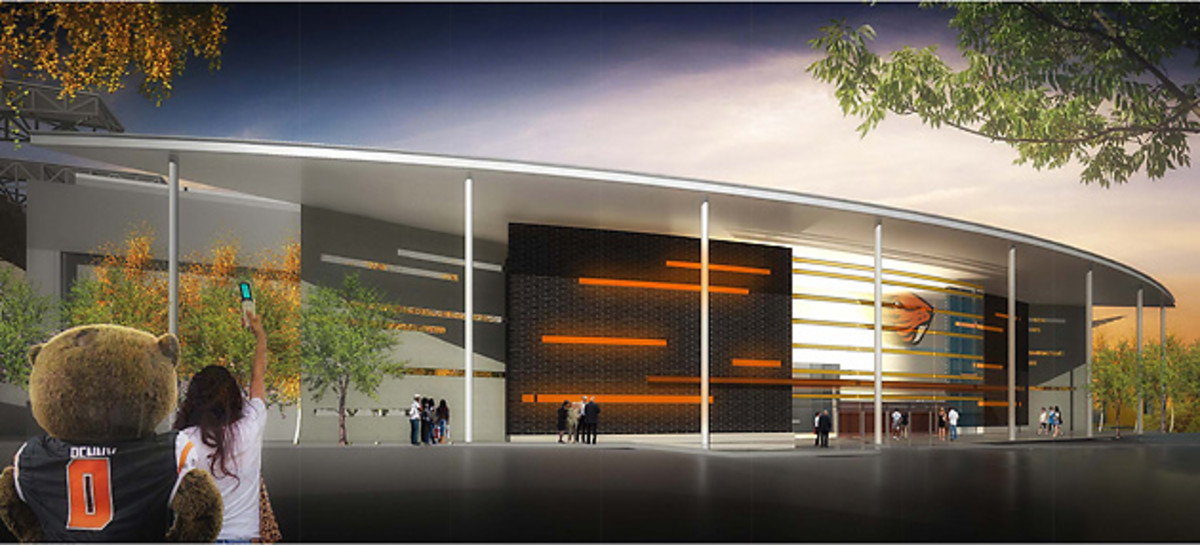
At the Beavers' spring game Saturday, Oregon State will show off the building renderings for the first time since “Victory Through Valley”—Oregon State’s slogan to generate fundraising—launched on Dec. 10. Completion is scheduled for August 2016, just in time for fall camp.
The major renovation comes just a few months after Oregon State hired Andersen away from Wisconsin in perhaps the most surprising move of the college football off-season (also in contention for that title: longtime Beavers coach Mike Riley jumping to Nebraska). It was a hiring coup of sorts for Oregon State, which has amassed a 21-17 record the last three seasons and has often been labeled by outsiders as one of the toughest jobs in the country. Andersen, by comparison, went 30-9 in his last three campaigns, including an 11-win season at Utah State (2012) and a 10-win season at Wisconsin (‘14) despite leaving the Badgers before their victory in the ’15 Outback Bowl. He took the job without ever visiting Oregon State’s campus, sold on “a mindset” laid out for him by athletic director Bob De Carolis and university president Ed Ray.
Andersen’s hiring fit right in with the renaissance the Oregon State athletic department has been experiencing, beginning with the men’s basketball team’s surprising success under first-year coach Wayne Tinkle. The women’s basketball team also had its best season in program history, highlighted by a second consecutive trip to the NCAA tournament. There’s major momentum and “mojo” around the university, Andersen says, and everyone can feel it.
Of course, that could all be halted by the time fall rolls around and Andersen’s first squad takes the field. Andersen and his staff must retool an offense and defense gone stale—the Beavers went 5-7 last year and ranked ninth in the Pac-12 in yards per play and yards allowed per play—and they don’t have many veterans to do it.
Andersen has installed a spread offense, and the transformation has been readily apparent, perhaps never more so than when true freshman quarterback Seth Collins catapulted to a score in a mid-March scrimmage. (Of the potential starter’s aerial acrobatics, Andersen told reporters, “Seth's game is his ability to be able to be athletic and make those special plays, and it puts him at high risk, especially when he decides to helicopter his way into the end zone. It makes me a little bit nervous, but it shows his competitive nature.") It’s a dramatically different look for the Beavers, who became the relics of the Pac-12 the last few years, sticking with Riley's pro-style attack in a league famous for its high-powered spread offenses.
And that’s just the change on one side of the ball. The Beavers have spent the spring studying odd- and even-front defenses, Sitake says, because he believes unpredictability is key in defending modern offenses. His plan is for Oregon State to show multiple fronts, another big change for a program that has been almost exclusively 4-3 for the last 10 years. The Beavers lost nine starters from the 2014 defense, but Sitake and his staff have stressed that it doesn’t matter who started last year because everyone is beginning from scratch.
Finding familiarity: Tom Herman at ease during first spring at Houston
Perhaps the most immediate impact of Andersen’s arrival was felt in, well, the impact. Andersen allowed live tackling at practice, encouraging contact and competition. The last few years, partially because of depth concerns, Oregon State limited live tackling in spring and fall camp. Some believe this played a role in the Beavers’ notoriously slow starts, though injuries were also an issue. Regardless, Andersen’s philosophy has brought new juice to practice. And the players love it.
“First word I remember coach A using when he stepped on campus was ‘aggressive,’” says Cyril Noland-Lewis, a junior safety praised this spring for his instincts. “It was exciting to get physical, knock a little rust off before the next off-season phase. We definitely wanted to touch the offense a few times (the last couple years), get to pick on them a little bit. Big hits bring the energy, and energy helps the team.”
Andersen says Saturday’s spring game—which will be an actual game with quarters, teams and scoring, another dramatic change for the program—will be “pretty vanilla” from a schematic standpoint. Many college coaches roll their eyes at the spectacle spring games have become, but Andersen welcomes the limelight for a young roster trying to build and gauge toughness. “I want them to compete, want them in front of a crowd, want them on national television,” he says. “For this team, it’s vital. … It’s a big day for us as a football program.”
There’s plenty of work to be done. Andersen likely won’t settle on a quarterback until August, and players’ heads are still spinning from an entirely new playbook. Noland-Lewis understands it’ll take time for the offense to find its footing—maybe as long as two years. In the meantime he welcomes the challenge and pressure of trying to win with stifling, punishing defense. And he has confidence it’ll happen here because his coordinator has already proven he can do it in the Pac-12.
As for Sitake, he’d prefer to talk about the guys on the field, pointing to Andersen’s simple belief that, “Players make plays, and players win games.” It’s not about the coaches, Sitake insists, or any of their past success.
But he’s perfectly happy to let anyone keep doubting Corvallis and Oregon State. “This place, it’s not made for everybody,” Sitake says. “And that’s O.K. with me.”
In fact, he kind of likes it that way.
GALLERY: PAC-12 PLAYERS TO WATCH IN 2015
Pac-12 players to watch in 2015
Cody Kessler, USC QB
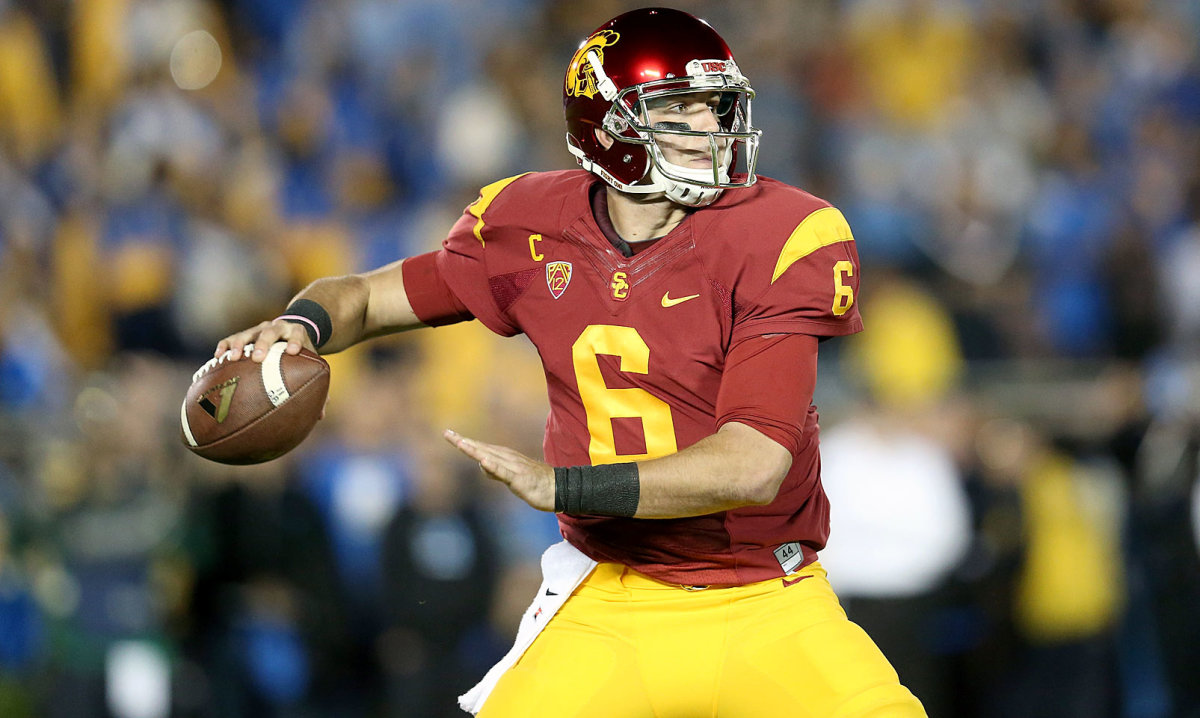
Kessler is tasked with continuing the legacy of great USC quarterbacks, and he seemed more than ready for the job last season. Kessler threw for 39 touchdowns with only five interceptions, completing about 70 percent of his passes. He has the kind of arm that could return the Trojans to national contender status and possibly inject himself in the Heisman conversation in the process.
Royce Freeman, Oregon RB
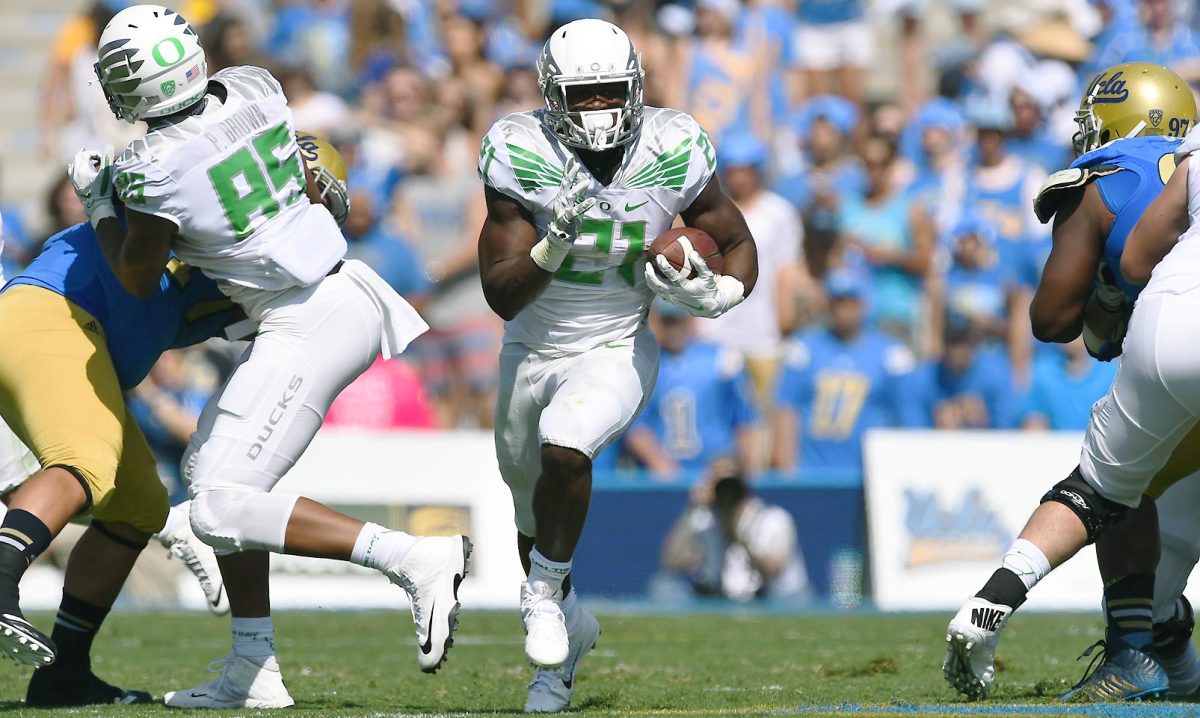
Freeman was a five-star recruit who saw playing time as a true freshman for the Pac-12 champion Ducks in 2014. He brings a power-running element to Oregon's backfield, and he bowled over linebackers last season on his way to over 1,300 yards and 18 touchdowns.
Scooby Wright III, Arizona LB
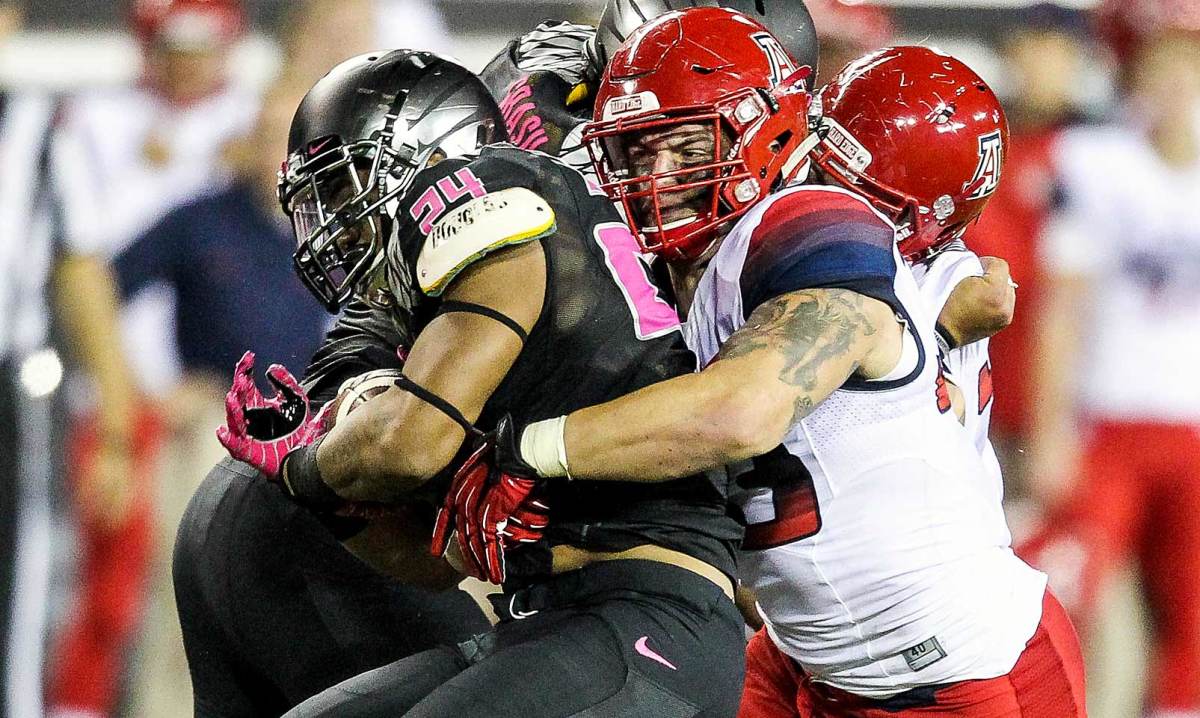
Wright was one of the most dominant players on either side of the ball in college football last season. He amassed an incredible 29 tackles for loss, 14 sacks and six forced fumbles for the Wildcats. Pac-12 quarterbacks are already looking forward to when Wright leaves for the NFL.
D.J. Foster, Arizona State RB/WR
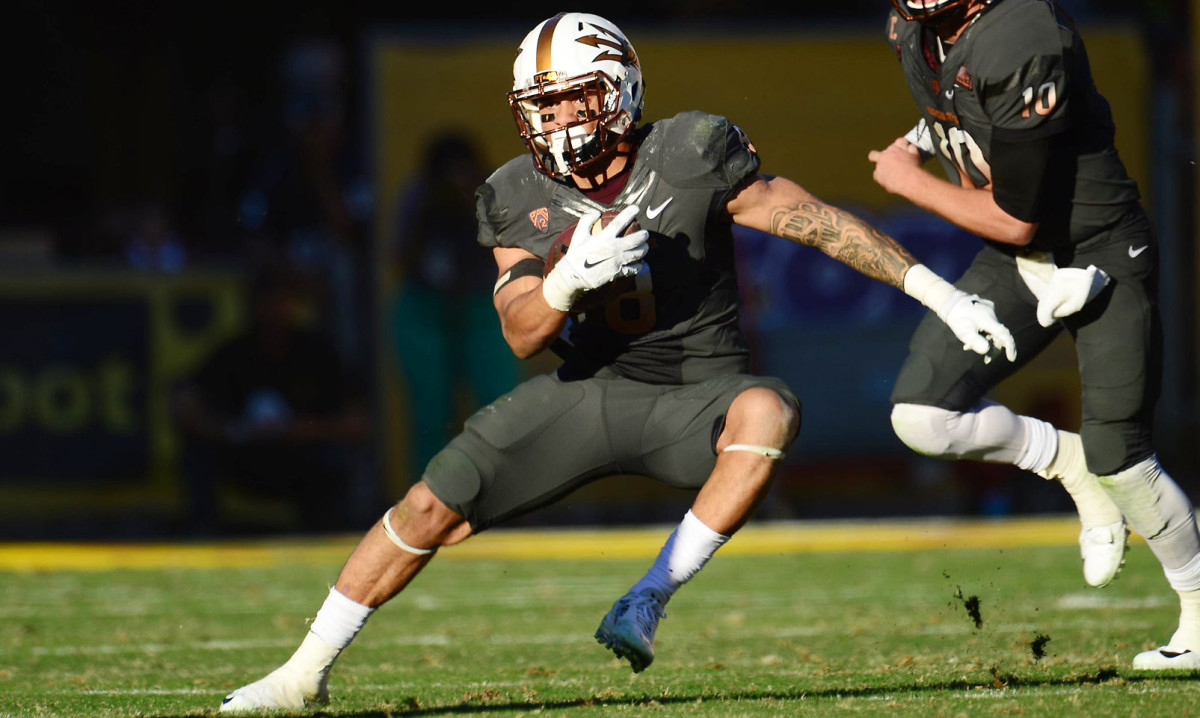
Foster was given his most responsibility in three seasons for the Sun Devils in 2014, and he responded by becoming one of the conference's most explosive rushing and receiving weapons. He ran the ball for more than five yards per carry on his way to 1,081 yards and also caught 62 passes for three touchdowns. With the emergence of Demario Richard in the backfield, Foster should spend more time in the slot in '15.
Su'a Cravens, USC S
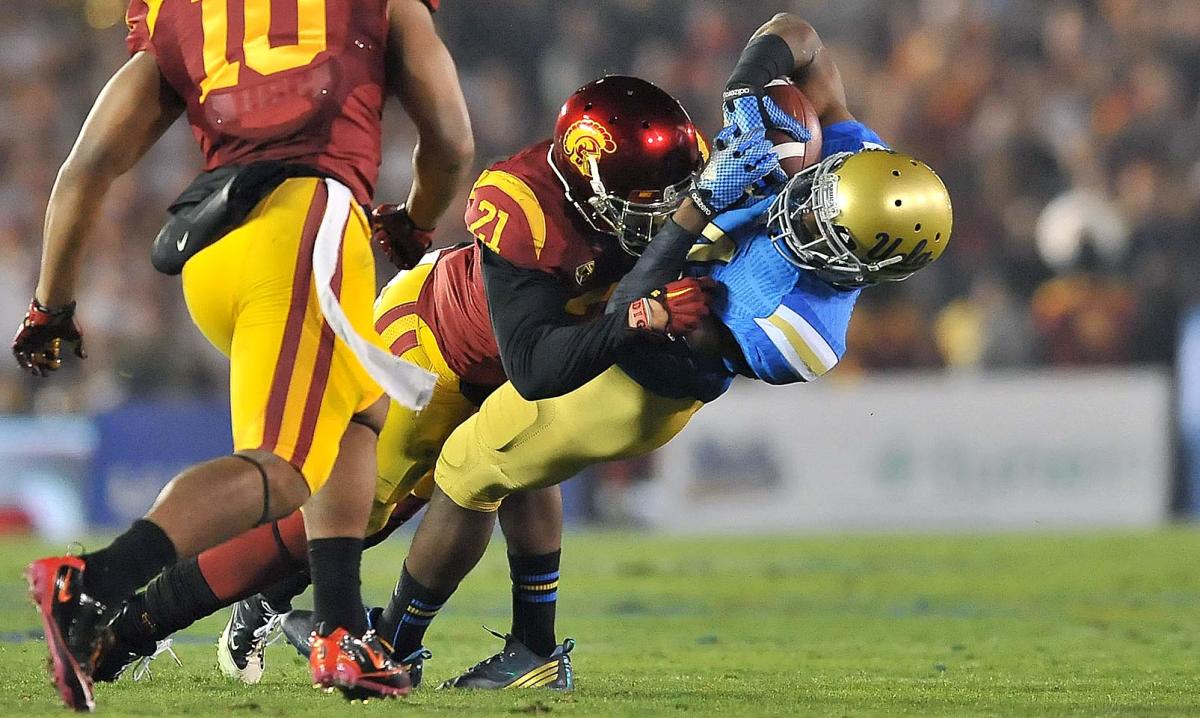
Cravens is the latest in a line of uber-athletic USC defenders. The hybrid safety-linebacker is a menace all over the field, recording five sacks and three interceptions last season. With star defensive end Leonard Williams off to the NFL, Cravens is the clear leader of the Trojans defense.
Nick Wilson, Arizona RB
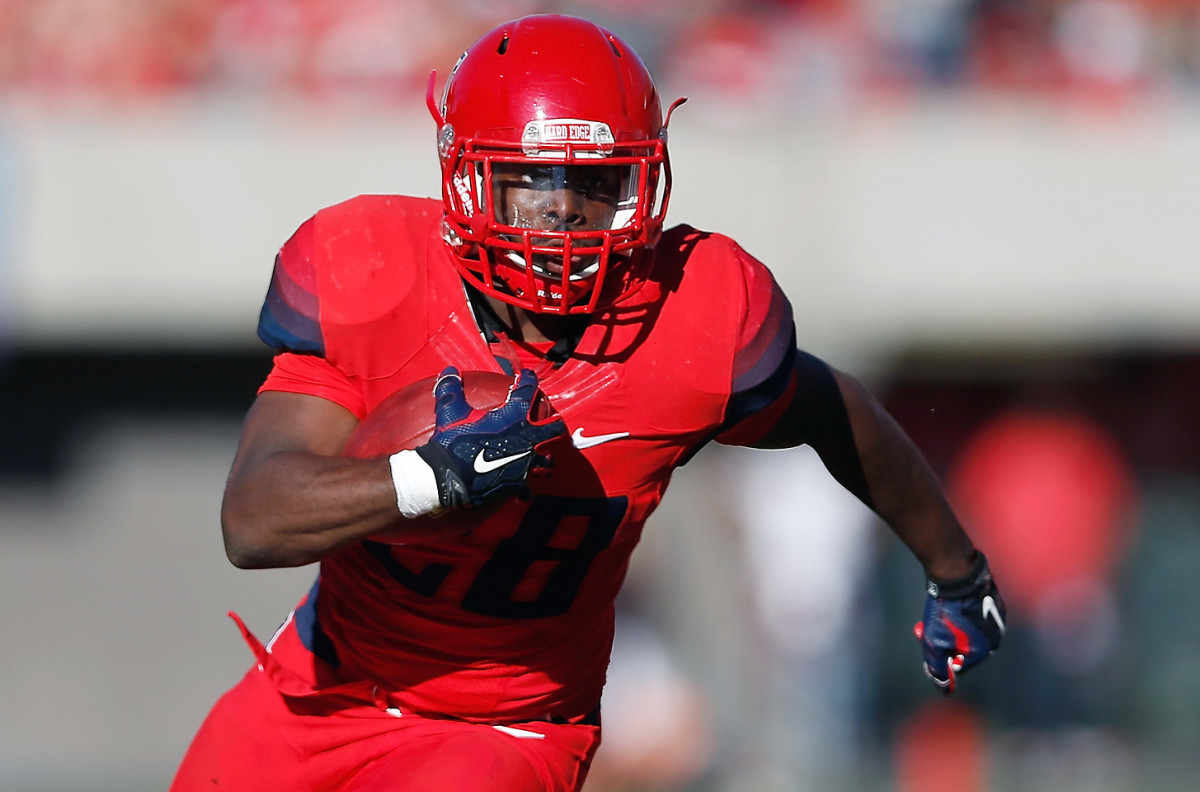
Wilson made his own case for the best running back in the state of Arizona, rushing for 1,375 yards in 2014 despite missing a game. The 5'10" rising sophomore weighs less than 200 pounds, but he proved he's capable of being a workhorse back for the Wildcats.
Myles Jack, UCLA LB
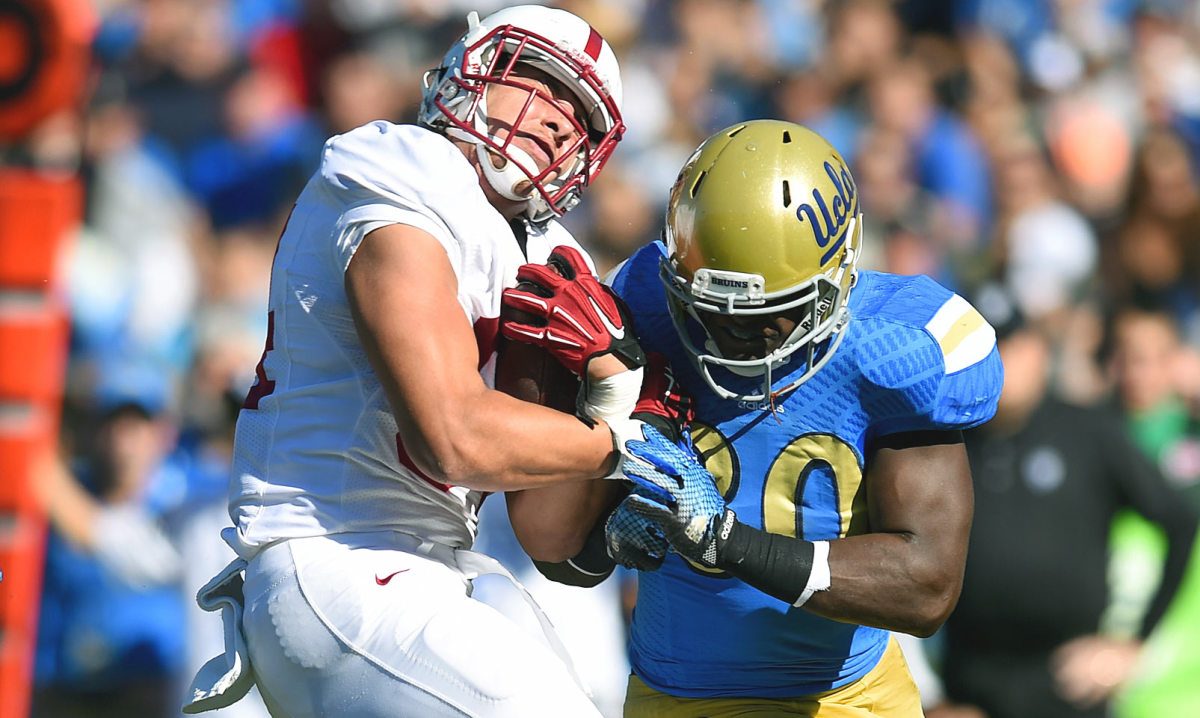
Jack is a tackle machine for the Bruins, and also spends some time evading tacklers on the other side of the ball. The former four-star recruit played both linebacker and running back in his first two seasons in Los Angeles, and he continues to be a true dual threat. With All-America linebacker Eric Kendricks gone, Jack's defensive responsibilities only increase.
Devontae Booker, Utah RB
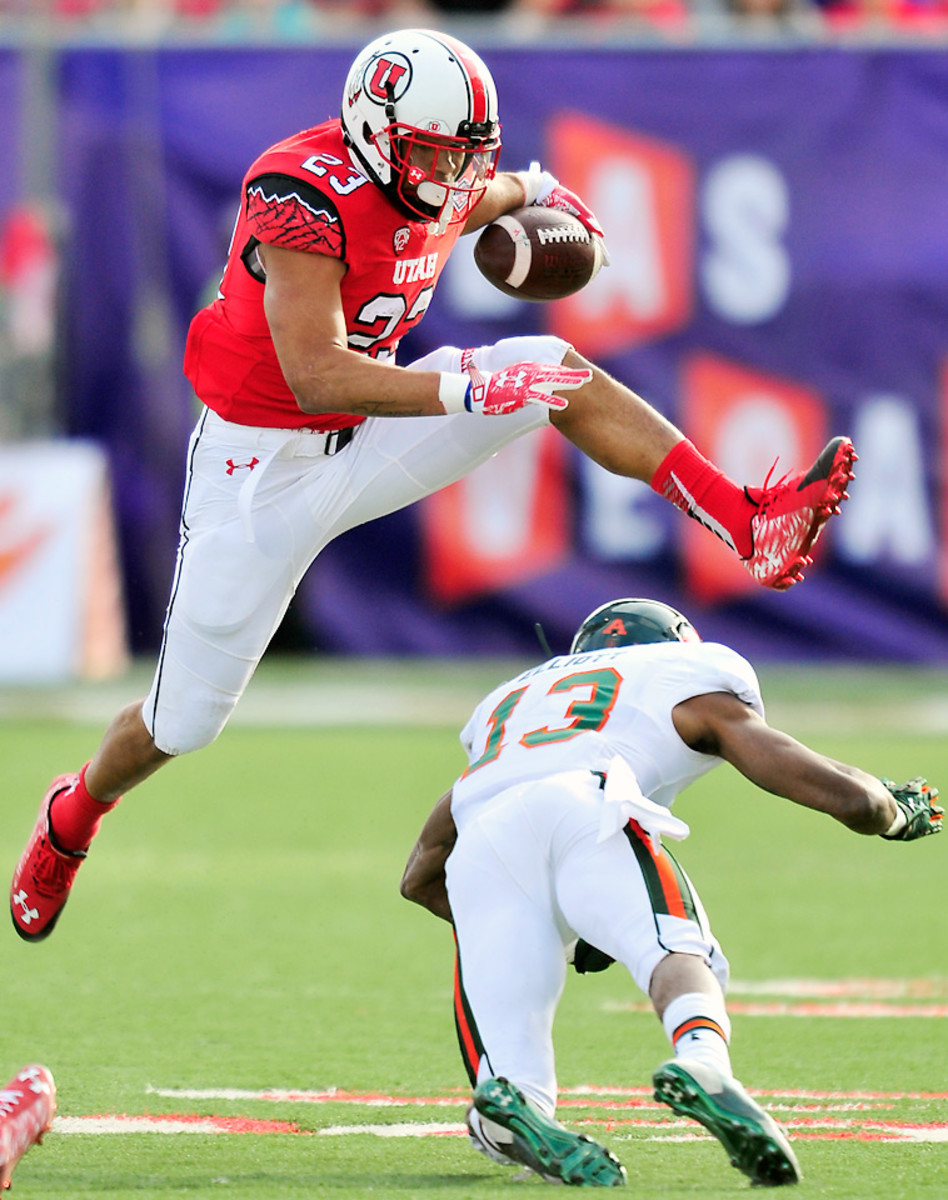
Booker is another one of the conference's dual threats coming out of the backfield. The American River College transfer ran for over 1,500 yards and caught 43 passes in his first season at Utah.
DeForest Buckner, Oregon DE
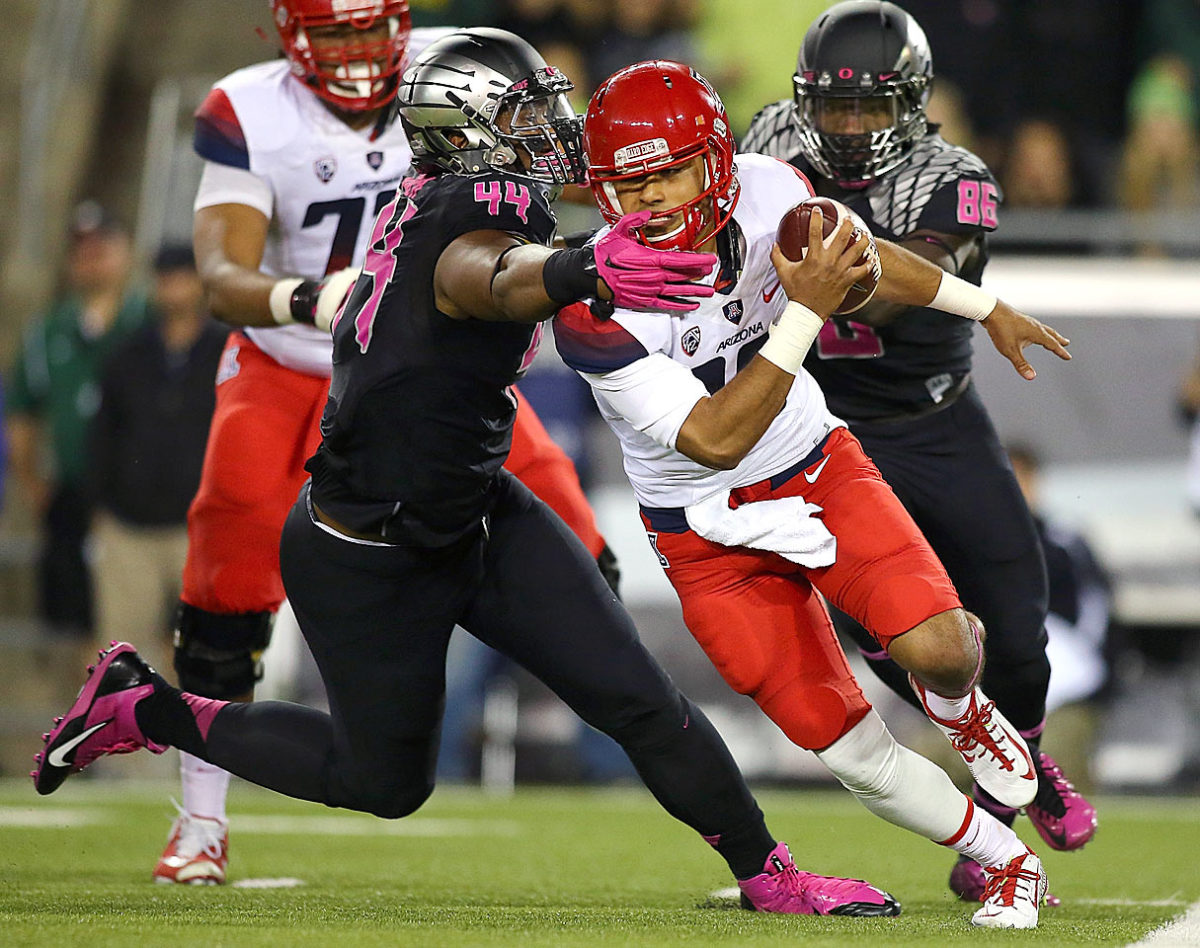
Buckner is back for his senior season as he tries to help Oregon return to the national championship game. He's a leader along the Ducks' defensive line, racking up tackles and pressuring the passer to the tune of four sacks in 2014. Fellow defensive end Arik Armstead's decision to leave early for the draft means the Ducks will need a monster season from Buckner.
Paul Perkins, UCLA RB
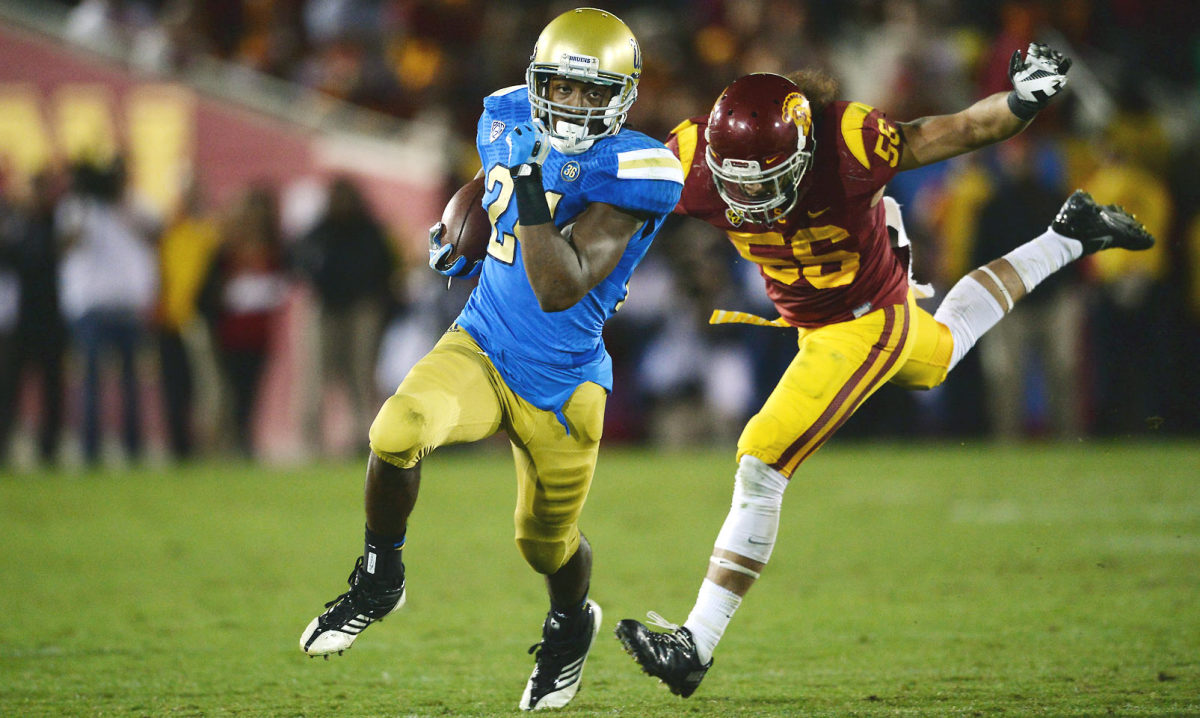
Perkins is—you guessed it—a running back who can also threaten defenses with his ability as a receiver. The rising junior averaged over six yards per carry and over seven yards per catch in 2014. His 1,575 yards on the ground last season were good for the second-highest single-season mark in UCLA history.
